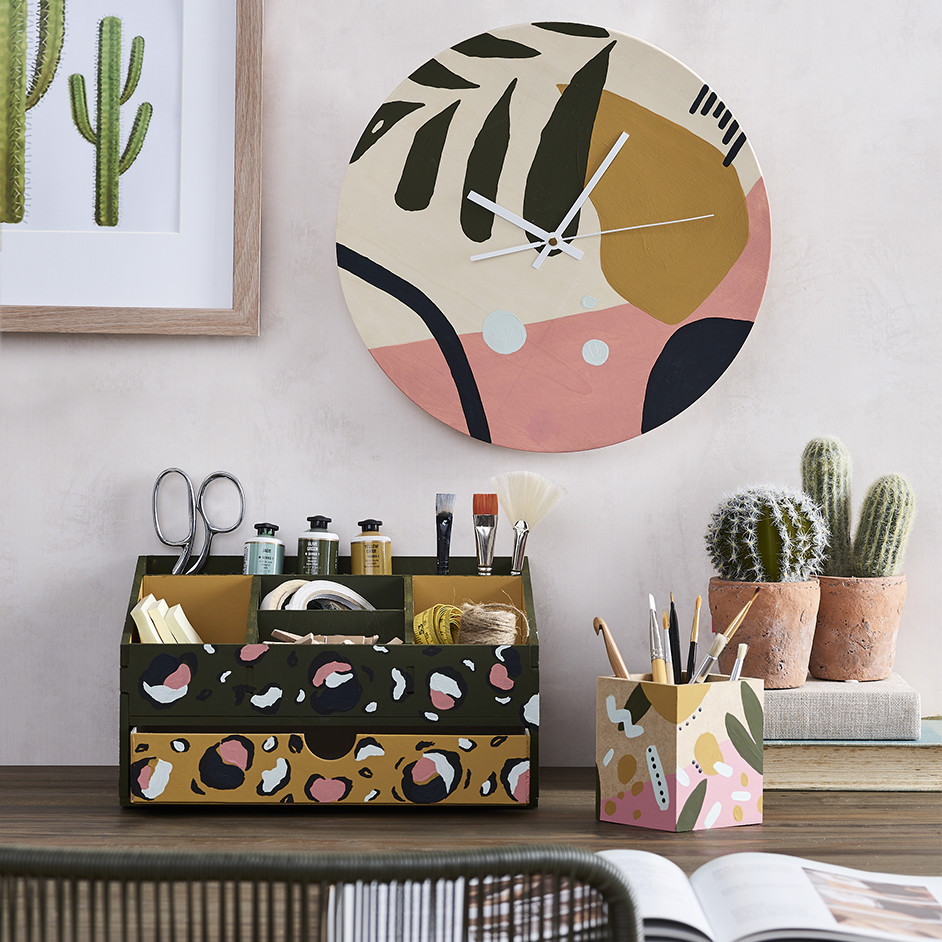 | ||
| Your browser is not supported. | ||
|
Please browse our site using any of the following options:
| ||
EXOTIC GREEN HOUSE CLOCK & ORGANISER

LEVEL: EASY
WHAT YOU'LL NEED:
- DIY Clock kit
- 'Kaisercraft' timber stationary holder
- 'Kaisercraft' timber organiser
- Hot glue gun and glue sticks
- Paint brushes
- Water for cleaning brushes
- Pencil
- Paper for planning your design
- 'Jo Sonja' acrylic paint in the following colours - Ocean blue, Paynes Grey, Black Carbon, Purple Mudder, Skin tone light, Magenta light, Yellow oxide, Titanium White, Jade & Olive green
INSTRUCTIONS
Step 1 - Assemble and glue together the timber organiser following the directions of the product.
Step 2 - On a piece of paper trial different colours and shapes to find what combinations you like and want to work with on your different pieces.
Step 3 -Start by painting the organiser in a solid background colour, we chose yellow oxide and olive green. You may wish to do a couple of coats to get a solid base colour. Then to create the leopard print pattern paint random irregular shaped spots over the draws in different colours - we chose jade, paynes grey and skin tone light with a small amount of magenta light. If some of the spots overlap this is fine as it will add depth to the pattern. Allow the paint to dry before step 4.
Step 4 - Lastly use the black paint to paint on the leopard spot outlines. You can outline the spots fully or partially to create different outline patterns. Use these outlines in different variations over the yellow and brown spots to finish your leopard print.
Step 5 - For the stationary organiser and clock play with different shapes and colours to create interesting designs. We have used irregular shapes, leaf inspired shapes, spots, stripes and zig zags together.
Step 6 - You can draw these designs onto a piece of paper first to play with different compositions or use a pencil to light draw your designs onto the surface first before painting over. But as these are meant to be quite abstract it's fun and easy to just go for it!
Step 7 - Paint the designs on using different sized brushes depending on the area. Always allow paint to dry before painting a second coat.
Step 8 - Once all your pieces are dry you will have a fresh and creative work space to call your own!




